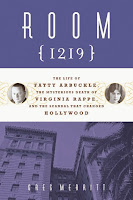
The Ten Year Nap, by Meg Wolitzer, is a candid look at the lives of four stay-at-home moms. Amy, Jill, Roberta, and Karen are highly educated women who have given up their careers to raise their children. Now, ten years later, the are having doubts regarding the extent to which they are invested in their families. Yet re-entering the workforce after a long sabbatical is a frightening prospect.
Amy Lamb, who is the central protagonist of the book, is an attorney married to her former colleague (Leo). Amy's mother is a successful novelist who was part of the first wave of feminists in the late 60s and early 70s. She is critical of Amy's life choices and disappointed in what she has not achieved.
Her college chum, Jill, has had her own disappointments. Always a brilliant student, her mother's suicide has shaken her notions of what it means to be a woman and a mother. When she and her husband adopt a child from the Soviet bloc, she grapples with her inability to connect with her child.
Then there is Roberta, a failed artist turned puppeteer, who becomes a mentor for a disadvantaged South Dakota teen. Yet when the novelty wears off, she abruptly stops writing to her. Disappointed in herself, Roberta begrudges her husband for his late-life success in puppetry.
Karen, alone among her friends, is happy with her life. A mathematical genius, she and her banker husband share a close bond.
Karen was genuinely grateful for what they had, and she and Wilson gave a lot of money to charity every year...After she had asked Wilson that question about whether she was selfish, she felt almost no residual ambivalence about her own desire to make her family life run beautifully, and to stay in one place, eating an expensive little salad from its container. All that she lacked was more direct contact with numbers and number theory. (p. 217)
The Ten Year Nap does suffer a bit from having too many secondary characters. Yet the book tries to intelligently explore what Rebecca Traister terms,"the mommy wars." (http://www.salon.com/2008/04/03/meg_wolitzer/) What is it like for women to tackle motherhood as they once did their careers? And what happens when children begin to grow up? Meg Wolitzer once again gives us an intimate portrait of marriage, women's friendships, and motherhood.
Check Our Catalog







